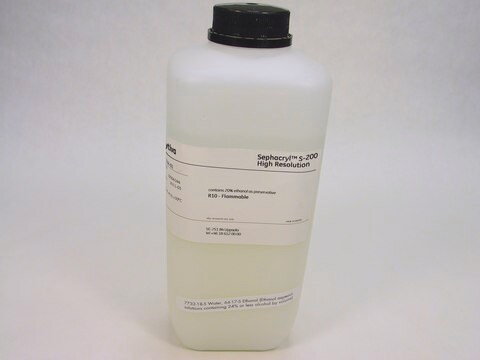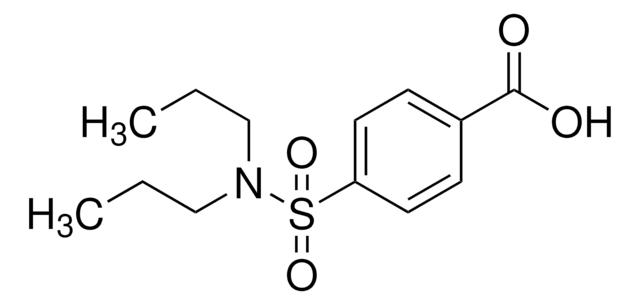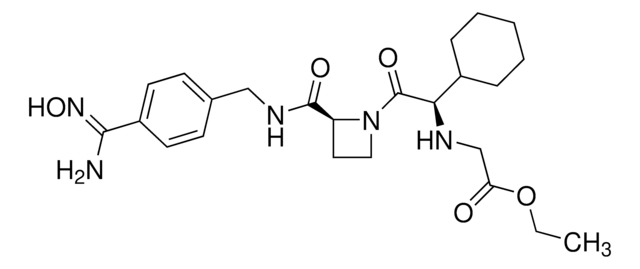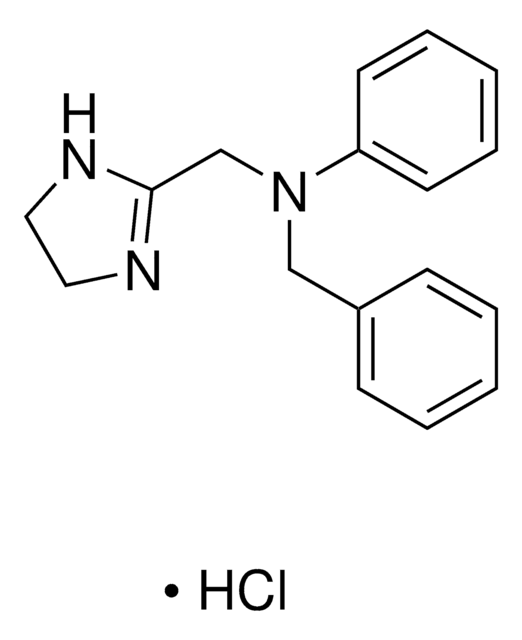SML0846
Anagrelide hydrochloride
≥98% (HPLC)
Synonym(s):
6,7-Dichloro-1,5-dihydro-imidazo[2,1-b]quinazolin-2(3H)-one hydrochloride
About This Item
Recommended Products
Quality Level
Assay
≥98% (HPLC)
form
powder
storage condition
desiccated
color
white to beige
solubility
DMSO: 1 mg/mL, clear (warmed)
storage temp.
2-8°C
InChI
1S/C10H7Cl2N3O.ClH/c11-6-1-2-7-5(9(6)12)3-15-4-8(16)14-10(15)13-7;/h1-2H,3-4H2,(H,13,14,16);1H
InChI key
TVWRQCIPWUCNMI-UHFFFAOYSA-N
General description
Fab fragments from polyclonal anti-fluorescein antibodies, conjugated to alkaline phosphatase.
After immunization with fluorescein, the sheep IgG was purified by ion exchange chromatography and the specific IgG was isolated by immunosorption. The Fab fragments obtained by papain digestion were purified by gel filtration, conjugated with alkaline phosphatase, and stabilized in 50 mM triethanolamine buffer, 3 M NaCl, 1 mM MgCl2, 0.1 mM ZnCl2, 1% bovine serum albumin (w/v), pH 7.6.
Clone: polyclonal
Ig class: sheep IgG, Fab fragments
Biochem/physiol Actions
Features and Benefits
Signal Word
Warning
Hazard Statements
Precautionary Statements
Hazard Classifications
Aquatic Chronic 4 - Carc. 2 - Repr. 2
Storage Class Code
11 - Combustible Solids
WGK
WGK 3
Flash Point(F)
Not applicable
Flash Point(C)
Not applicable
Certificates of Analysis (COA)
Search for Certificates of Analysis (COA) by entering the products Lot/Batch Number. Lot and Batch Numbers can be found on a product’s label following the words ‘Lot’ or ‘Batch’.
Already Own This Product?
Find documentation for the products that you have recently purchased in the Document Library.
Articles
Cyclic nucleotide phosphodiesterases (PDEs) catalyze the hydrolysis of cAMP and/or cGMP. There are 11 different mammalian PDE families.
Our team of scientists has experience in all areas of research including Life Science, Material Science, Chemical Synthesis, Chromatography, Analytical and many others.
Contact Technical Service








